Hastily buried in unmarked graves
Seven months after the July uprising in Bangladesh, many protesters still remain missing. We investigated 31 cases: six were buried as unclaimed bodies at Rayerbazar graveyard; four were identified by families from among the charred bodies in Ashulia; two were handed over to families after DNA testing; and 19 are still unaccounted for. We found evidence of systematic government efforts to cover up medical records and bodies of the victims so they can never be found again. This four-part series also documents how families were denied time to collect the corpses from hospital morgues, and how they are now waiting for the bodies of their loved ones.
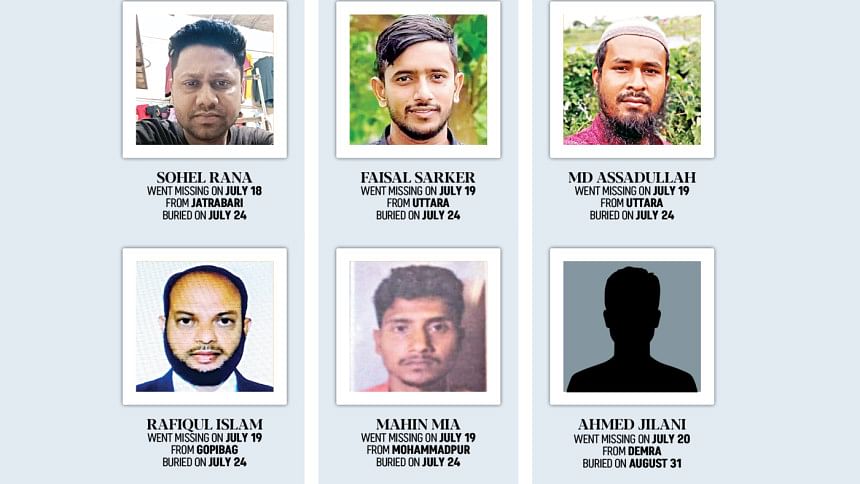
On July 18, 2024, two days after Abu Sayed's killing in Rangpur, Sohel Rana stepped out of his home in Dhaka's Jatrabari around 6:00pm to join the quota reform movement. He told his mother he would be back soon, but he never did.
Around an hour after he joined the protest in Jatrabari area, police detained Sohel, 28, tortured him, and then shot him several times, four fellow protesters and a person who admitted him to Dhaka Medical College Hospital told The Daily Star. His inquest report, prepared by Shahbagh police, confirms he had multiple pellet wounds on both sides of his chest and bruises on different parts of his body.
Faisal Sarker, 18, a college student who also worked as a supervisor of a bus company, left home for work at Abdullahpur bus stand in Uttara on July 19. By the time he got out, the crackdown on the streets was getting worse.

"The night he disappeared, we kept our front door open, thinking he would come home at any moment. My son never came home. Now I cannot even find his grave."
He called his mother to tell her that he was coming home, in Cumilla, to stay with her until the situation stabilised. His family last heard of him when he was crossing Uttara to get a bus. He then vanished.
The same day in Uttara, Md Assadullah, a driver and a father of two, was shot by Awami League-affiliated helmeted assailants, according to CCTV camera footage and multiple still images verified by The Daily Star.
Sohel, Faisal and Assadullah never knew each other in life. But their fates converged in death.

Their bodies, along with many others, ended up at Dhaka Medical College morgue. Unidentified, unclaimed.
A nationwide curfew, intended to quash the movement, kept their families from finding them, and the six were hurriedly buried in unmarked graves at Rayerbazar before their relatives could collect their bodies, an investigation by The Daily Star has found.
Meanwhile, at least 19 more families we spoke to continue searching for their fathers, sons, brothers or husbands whom they lost during the July uprising. But they don't know if they will ever find them as there are hardly any efforts from the government to resolve the mystery of these missing men.
At least 12 of these 19 people went missing on August 4 and 5 from Dhaka, Savar, Gazipur, Sirajganj, Panchagarh and Bogura amid clashes and police firing.
The fact-finding report by the UN Office of the High Commissioner for Human Rights (OHCHR) cited senior security officials' testimony, saying deposed prime minister Sheikh Hasina herself ordered security forces to "arrest the ringleaders of the protests, the troublemakers, kill them and hide their bodies."
However, there is no official account yet of how many bodies were actually hidden by the state apparatus.
The Daily Star investigated 31 cases of unclaimed or missing bodies, but evidence suggests that the actual number is higher.
Over the last two months, we have pieced together hospital records and police inquest reports as well as records from Anjuman Mufidul Islam, a charity for burial service, and Rayerbazar graveyard, and found evidence of deliberate attempts by state forces to kill protesters and hide their bodies.

THE UNMARKED GRAVES
Anjuman Mufidul Islam is the only burial service in the country that handles unclaimed bodies. We reviewed its register and found that the charity buried 515 bodies from January to November 2024, an average of 47 bodies per month.
"We last heard of him when he said he was crossing Uttara to board a bus. There were sounds of gunfire. Since then, his phone has been switched off."
However, the body count jumped after the middle of July. Only in the last 10 days of that month, when police, Rab, BGB, Ansar and armed forces members were called in to tackle the protesters, Anjuman sent 45 bodies for burial in the Rayerbazar graveyard, just two less than its monthly average.
Anjuman's register shows it did not send a single body for burial from August 1 to 11, despite an intensified crackdown between August 2 and 5. But in the remaining 20 days, it buried 34 bodies.

We went to see the burial sites at Rayerbazar on January 29. Block 4 of the cemetery contained 114 graves without names or any other identifiable markings. Grave staffers said many were victims of the July uprising, but could not give a figure.
Analysing Rayerbazar's register, we found that 27 bodies buried in July and 13 in August had dates of death between July 17 and August 5, the final and the deadliest three weeks of Sheikh Hasina's 15-year authoritarian rule, when hundreds were killed and thousands injured by state forces.
In addition to Sohel, Faisal and Assadullah, at least three more protesters – Rafiqul Islam, Mahin Mia, and Ahmed Jilani – now lie in Rayerbazar as unidentified bodies, The Daily Star can confirm.
Photos of their bodies are still on display on a wall of Anjuman among the 114 buried in July-August.
Of the 114, at least 40 died between July 17 and August 5 and the rest 74 before and after that period. Based on the dates of death of the 40, it is likely that many of them were victims of the July massacre.
All the six July uprising victims that we have been able to identify went missing between July 18 and 20 in and around the protest hotspots—Jatrabari, Shonir Akhra, Uttara, and Mohammadpur, witnesses and family members said.

Except Jilani, who was killed on August 3 and laid to rest on August 31, the rest were buried in July, within days of their deaths. Apart from Mahin, who went missing from Mohammadpur and taken to Suhrawardy Medical College Hospital, the other five were brought to DMCH.
When we met Sohel Rana's mother Rasheda Begum at her Jatrabari house in January, she clutched a picture of her son to her chest and wept.
"The night he disappeared, we kept our front door open, thinking he would come home at any moment. My son never came home. Now I cannot even find where among the 114 graves lies my son."
Read Part 2 tomorrow on the systematic efforts by state agencies to hide the true extent of the July massacre.
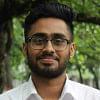
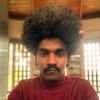
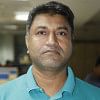
 For all latest news, follow The Daily Star's Google News channel.
For all latest news, follow The Daily Star's Google News channel. 



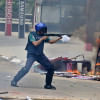
Comments